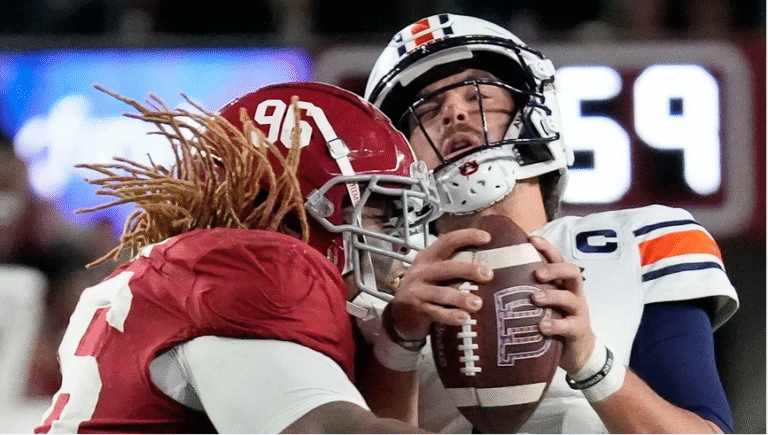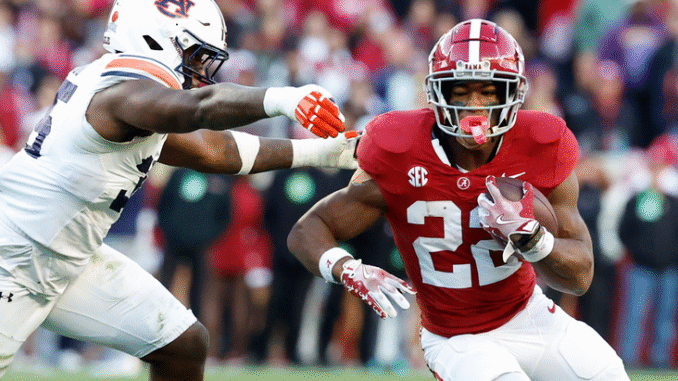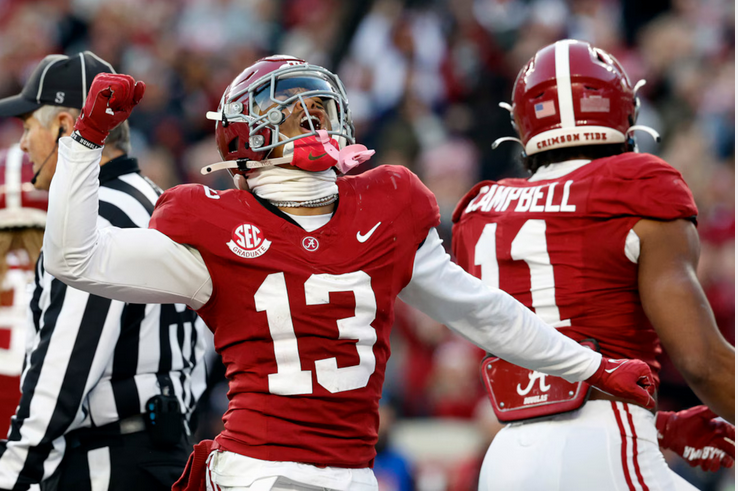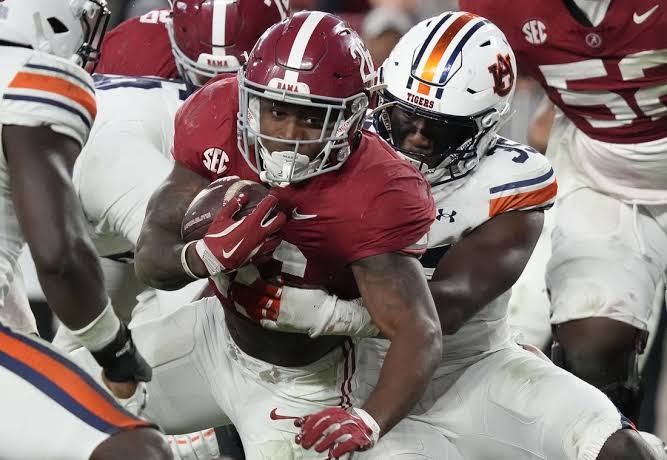
Alabama and Auburn Launch Historic Player Transfer Program to Reshape SEC Football
The long-standing Alabama vs Auburn rivalry is entering uncharted territory. In a shocking and unprecedented move, the two powerhouse programs have agreed to launch a player transfer program beginning with the 2026 SEC football season.
The initiative would allow two athletes from each school to switch teams for one season, marking the first time in college football history that bitter rivals have collaborated in this way. The plan, still awaiting NCAA approval, is designed to balance competition, expand opportunities for student-athletes, and reshape the future of SEC athletics.

How the Alabama–Auburn Player Transfer Program Works
Sources close to the negotiations confirmed that the agreement was reached after months of private discussions between both schools’ athletic directors and head coaches. A joint oversight committee — including a neutral third party, representatives from both schools, and a former player — would be responsible for selecting two athletes from each roster to make the exchange.
Key details of the proposal include:
- Seamless Academic Transition: Players would keep their scholarships and academic credits.
- Eligibility Protection: The transfer year would count as part of their normal college career.
- No Immediate Return: Athletes who switch teams would not be eligible to return to their original school for at least three years.
In effect, the transfers would be treated as part of the student-athlete journey, not as disruptions.

Fan Reaction: Tradition Meets Controversy
The announcement has ignited mixed emotions across the college football world. The Iron Bowl rivalry is one of the fiercest in American sports, and many fans see the idea of swapping players as sacrilege.
One Alabama supporter vented online:
“This is madness. The Iron Bowl is about proving who’s better, not trading players like collectibles.”
Meanwhile, others argue the move reflects the changing reality of college football — where NIL deals, expanded playoffs, and the transfer portal are already rewriting the rules of the game.

Challenges Ahead: NIL Deals, Logistics, and NCAA Approval
The plan also raises pressing questions about NIL sponsorships. Many endorsement deals are school-specific, which could complicate financial agreements for transferred athletes. Legal experts are already studying whether contracts would need to be renegotiated.
Additionally, the NCAA’s response remains uncertain. Approving such a groundbreaking concept could set a precedent for other rivalries and programs nationwide.
What This Means for the Iron Bowl and SEC Football
If approved, the Alabama–Auburn player transfer program could radically reshape not just the Iron Bowl, but the broader SEC landscape. Imagine a Crimson Tide linebacker lining up in Auburn’s blue and orange, or a Tigers wide receiver catching passes for Alabama.
While administrators frame the program as a forward-thinking innovation, critics argue it risks turning college football into a marketing spectacle.
Still, with both Alabama and Auburn pushing for change and the NCAA facing mounting pressure, this bold experiment may soon become reality.
⚡ Final Word
The 2026 Iron Bowl could mark the beginning of a bizarre but historic new era in college football — where rival players exchange teams in the name of balance, spectacle, and innovation. Whether it strengthens the rivalry or dilutes its tradition remains to be seen, but one thing is certain: the Alabama–Auburn transfer program is set to make headlines across the nation.



Be the first to comment